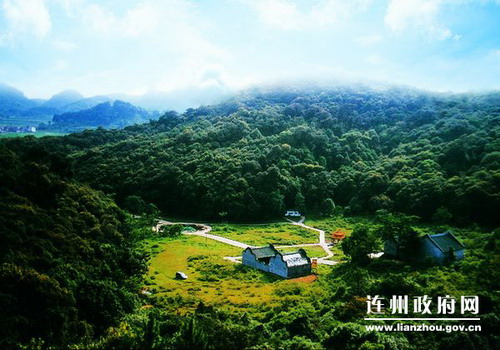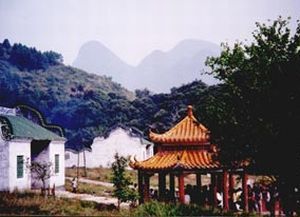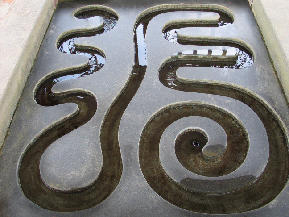 |
|
Fushan is a Taoist sacred area known for its Feng Shui and religious significance.
|
Located 20km north of Lianshan city, Fushan in Bao’an town is a Taoist sacred area straddling the boarder between Guangdong and Hunan provinces known for its Feng Shui and religious significance.
Fushan is surrounded by mountains on three sides. It has been renowned throughout history for its beauty; the annals (ancient state documents) record that “The three mountains are steep and beautiful. They are about 430 meters high and covered with lush green pines and cypresses”. In the mountains today, ancient cypresses and pines still stand magnificently with bamboos and flowers nestling between them. The climate is pleasant and the scenery is soothing. The largest trees in Fushan are Castanopsis eyrei and Castanopsis sclerohylla Schottky. These 300-400 year-old trees are so large that three or four people can barely get their arms around them. Although they have been beaten by the elements for hundreds of years, they still have dense leaves that are full of vitality. In Fushan, these trees encircle a flat lawn hundreds of hectares wide.
In Bao’an town where Fushan Temple, or called Qingxu Temple, is located, local people have a tradition of “Carrying God” at the Double Ninth Festival. During the event, they will carry “God” (in fact, a prestigious local person) and parade him through the streets, aiming to drive out evil spirits and bring luck for the people. It is a site worth watching.
Qingxu Taoist Temple


Qingxu Taoist Temple and 福-shaped Well (福 means blessing in Chinese)
 The statue of Liao Qingxu
The statue of Liao Qingxu
The ancient Qingxu Temple in Fushan was first built during the Southern and Northern Dynasties (531). The Taoist Liao Qingxu, a native of Bao’an, Lianzhou, cultivated spiritual attainment in Fushan, leading the people in Lianzhou to later declare his residence a Taoist temple. In subsequent years, 12 halls were built. Today, many Taoists as well as Buddhists practice at the temple, for the area also lies in a Buddhist holy land.
The temple has had a turbulent history in recent years. During the Anti-Japanese War, Guangzhou was occupied by the Japanese, and the provincial capital was moved to Lianxian county. The temple was used by the Guangdong Children’s Home and received nearly one thousand children from the occupied areas. According to local people, funds appropriated by the central government for these child refugees in Fushan were all embezzled by governments lower down, leaving the children hungry to the extent that they were forced to eat leeches. Although impoverished, local people showed great sympathy for the children and adopted some of them. However, their means were limited. Denied government relief, many children starved to death. Shortly after, Kuomintang Security Forces liberated Fushan and the Taoists and Buddhists vacated the temple, leaving the building to gradually fall into disrepair. After the founding of the People’s Republic of China, the remaining temple buildings and statues were destroyed.
From the 1980s, the government began the restoration of Ziwei Hall, Zhenjun Temple, Beidi Hall and Fuzi Well. Meanwhile, to commemorate Meng Binyu, a renowned poet in the period of the Five Dynasties and Bao’an native, the Meng Binyu Monument was built. Over the years, increasing numbers of tourists have been coming to Fushan in order to view the beauty of the 70 Taoist sacred areas, pay respect to ancient sages and understand the history of the area.